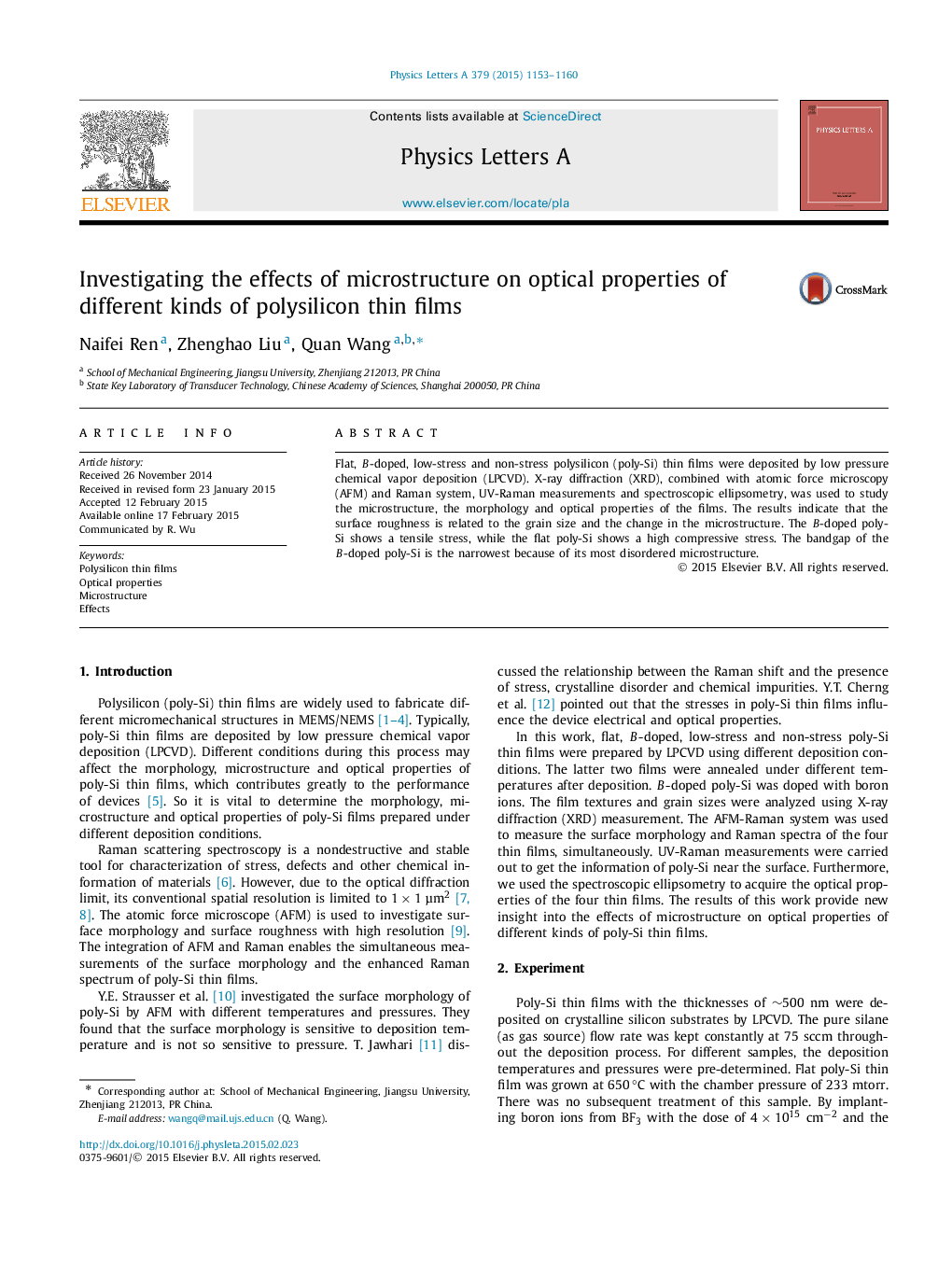| Article ID | Journal | Published Year | Pages | File Type |
|---|---|---|---|---|
| 1861182 | Physics Letters A | 2015 | 8 Pages |
•The surface roughness of polysilicon thin film is related to the grain size and the changes in the microstructure.•Annealing treatment can reduce the compressive stress in poly-Si thin films.•The TO mode peaks of the four polysilicon thin films at λ=322.1nm can be found in the UV-Raman Spectra.•The optical properties of the poly-Si are related to the microstructure and grain size.
Flat, B-doped, low-stress and non-stress polysilicon (poly-Si) thin films were deposited by low pressure chemical vapor deposition (LPCVD). X-ray diffraction (XRD), combined with atomic force microscopy (AFM) and Raman system, UV-Raman measurements and spectroscopic ellipsometry, was used to study the microstructure, the morphology and optical properties of the films. The results indicate that the surface roughness is related to the grain size and the change in the microstructure. The B-doped poly-Si shows a tensile stress, while the flat poly-Si shows a high compressive stress. The bandgap of the B-doped poly-Si is the narrowest because of its most disordered microstructure.
